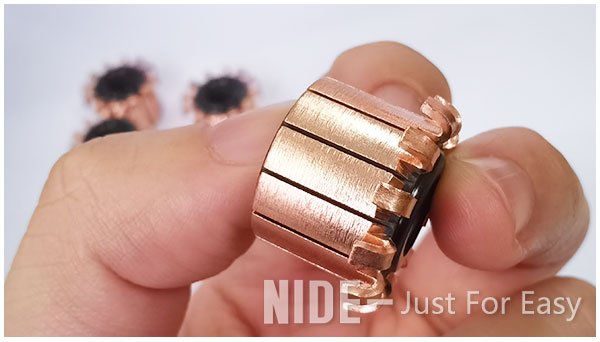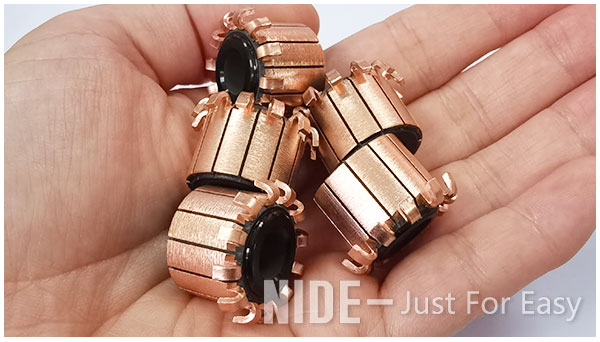How to solve the high temperature of commutator
In the motor, the commutator itself is not only responsible for the current commutation together with the brush, but also takes into account its own heat dissipation, especially for the short-time or intermittent quota motor, heat dissipation function accounts for a large proportion in the function of the commutator. The heat source of the commutator comes from the current flowing through the commutator, the brush and the sliding contact condition between them. However, the temperature rise of the commutator depends not only on the size of the heating source, but also on the size of the heat capacity of the commutator and the surface heat dissipation conditions.
For a motor that has been manufactured, the size of the heat capacity and heat dissipation conditions are a constant, therefore, one way to solve the commutator temperature rise is to reduce the heat source is to reduce the friction loss and contact electrical loss between the brush and the commutator.
The friction loss of brush and commutator in their relative motion is directly related to the friction coefficient of brush. If you want to reduce this loss, the way out is to reduce the friction coefficient of the brush. The contact loss of the brush is equal to the voltage drop of the brush multiplied by the current flowing through the brush. The only way to reduce this loss is to reduce the brush contact voltage drop.
In addition to the above two losses, the other loss is related to the allowable current density of the brush. The friction loss and electrical contact loss of the brush are assumed to be calculated under certain conditions.

